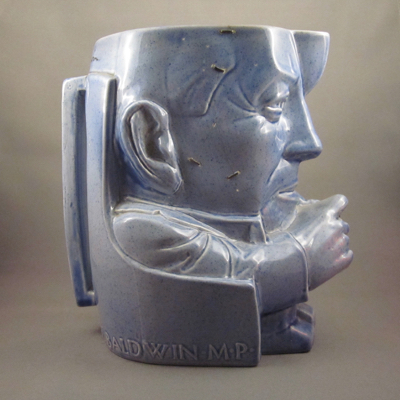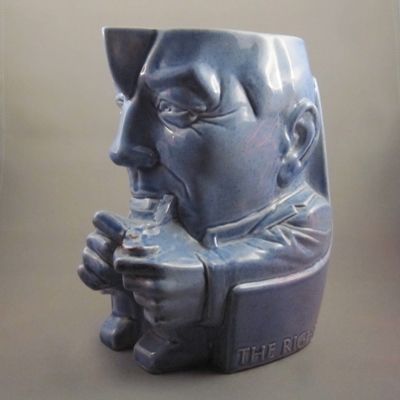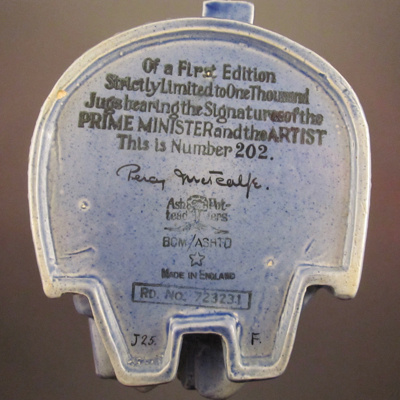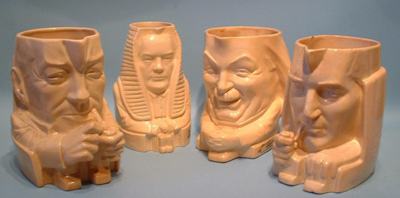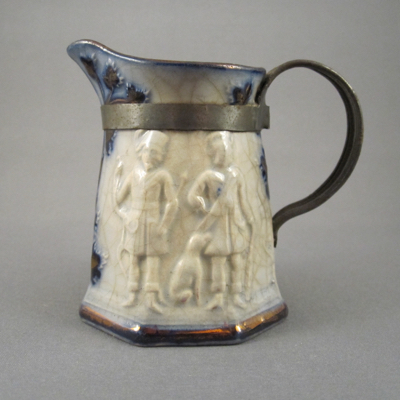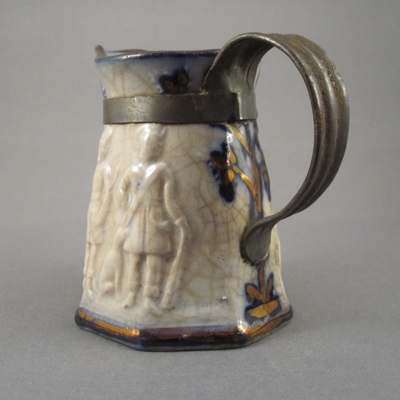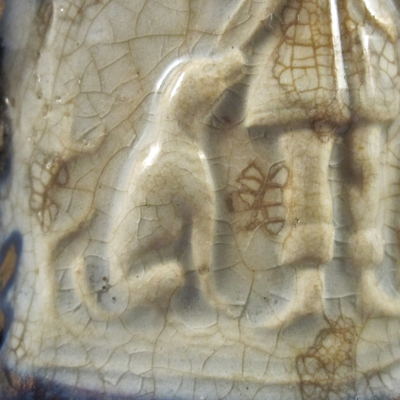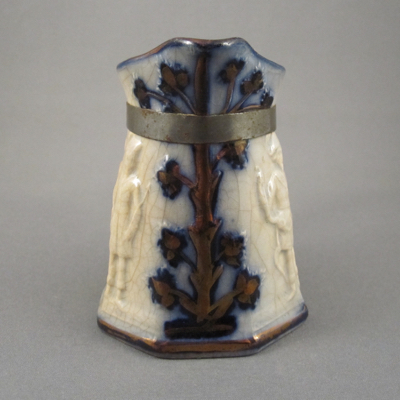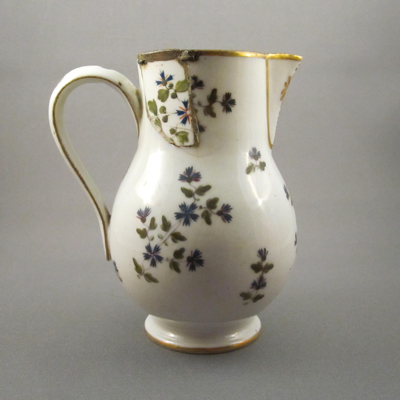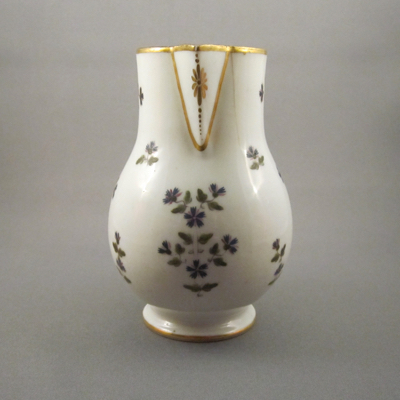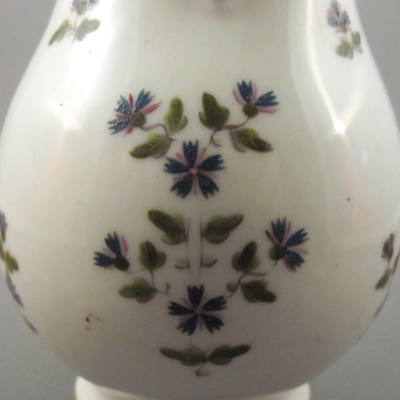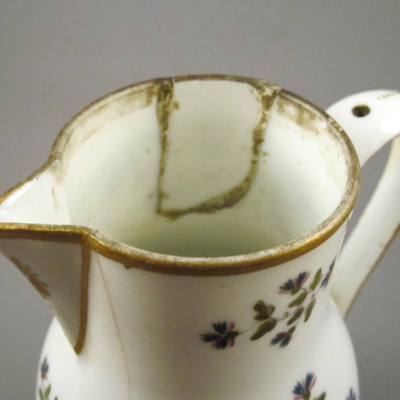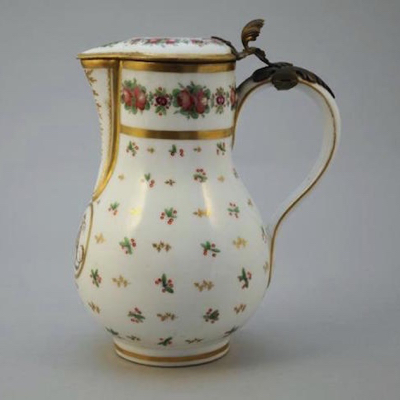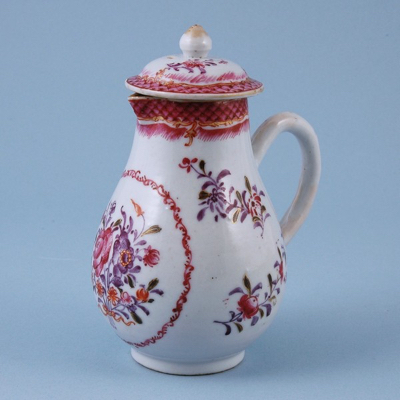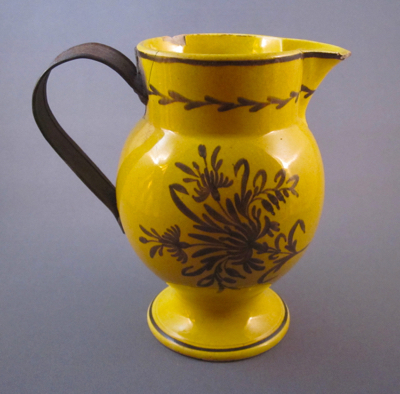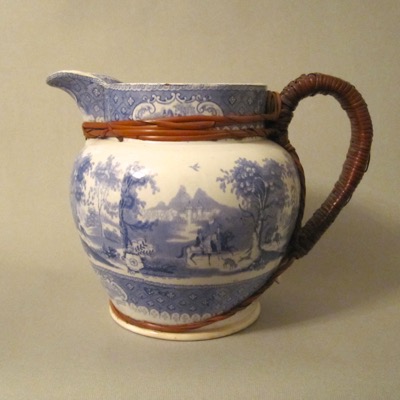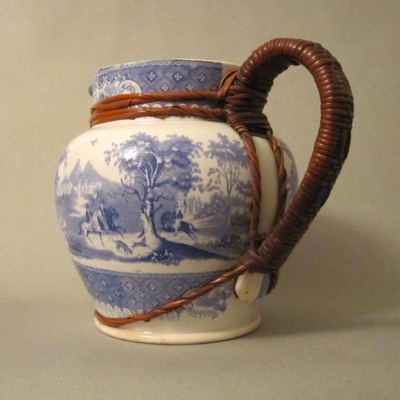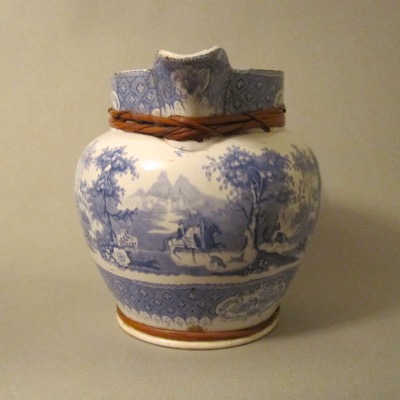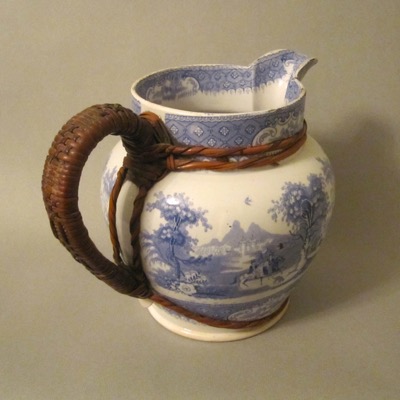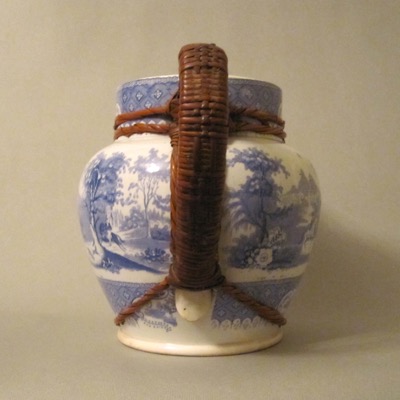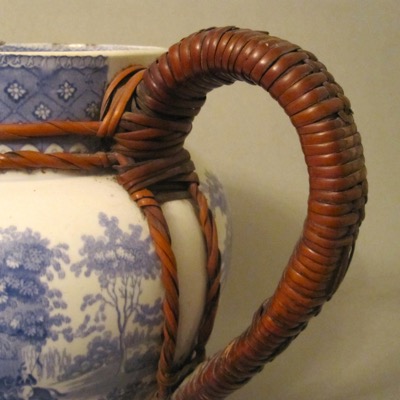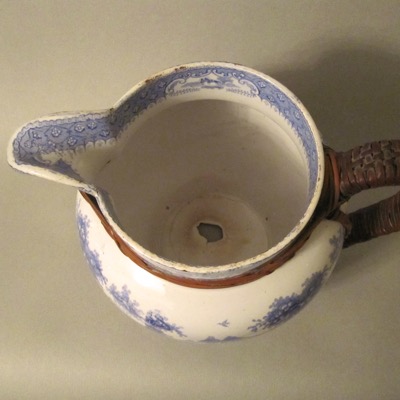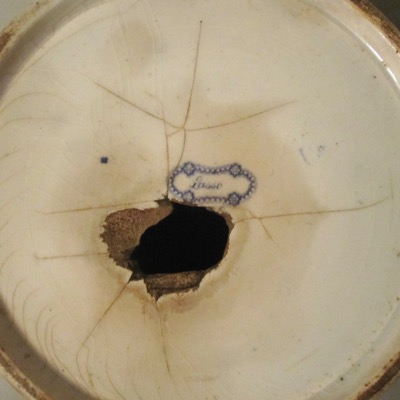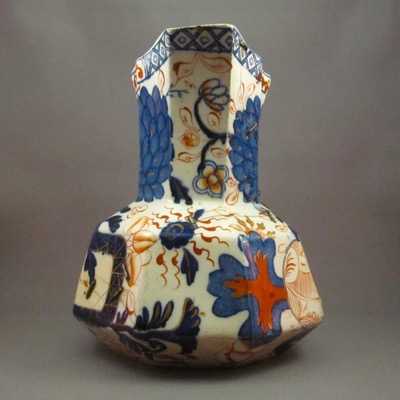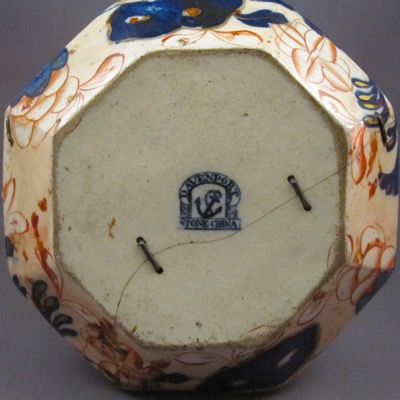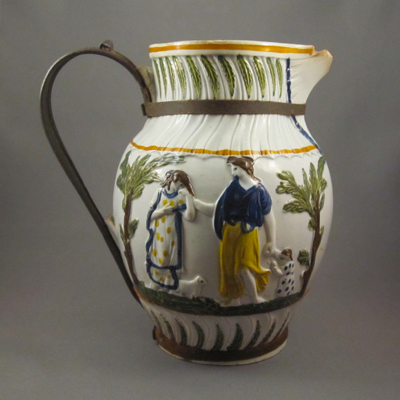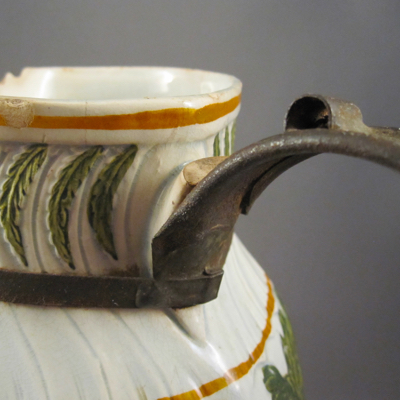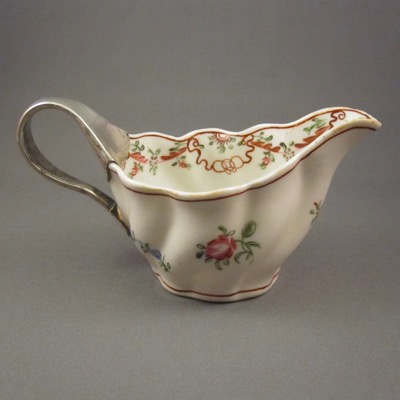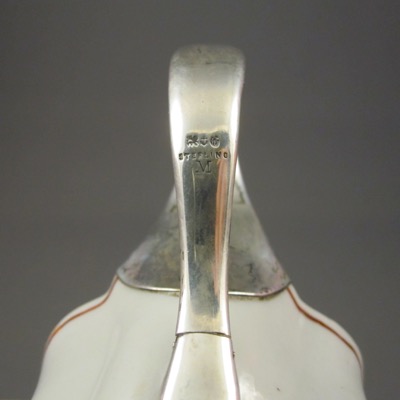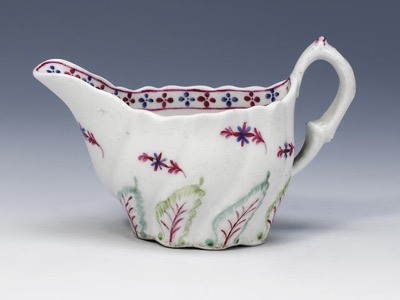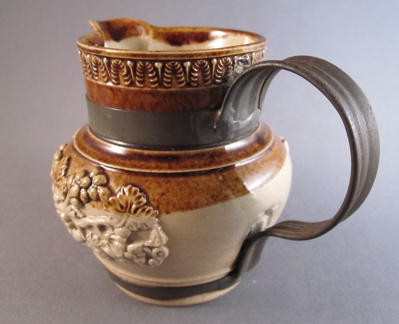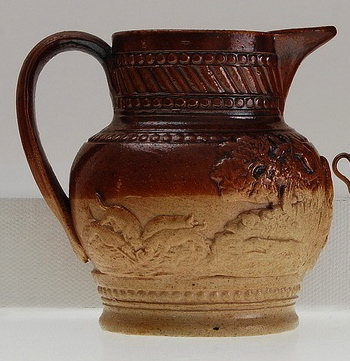Is this another monster created by Dr. Frankenstein? Not exactly, but it looks like his English relative.
This blue-glazed pottery character jug in the form of British Prime Minister Stanley Baldwin was designed by Percy Metcalfe and produced in Surrey, England, by Ashtead Potters between 1923-1929. It stands 7.5 inches high and is boldly marked on the underside and numbered 202 of a limited edition of one thousand.
We will never know for sure if the jug became broken accidentally or if it was thrown in disgust as a result of a disagreement over the political views of the Right Honorable Stanley Baldwin. Either way, four small metal staples were used to repair his broken face. Ouch, that’s gotta hurt!
Three other commemorative jugs were made in this series. Shown here in Pearl Barley glaze, they include Attorney General Lord Hailsham (Douglas McGarel Hogg), British Prime Minister David Lloyd George, and Australian Prime Minister Stanley Melbourne Bruce.
Photo courtesy of Ashtead Pottery
